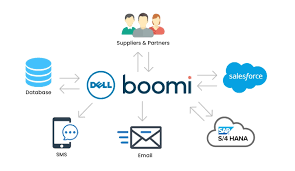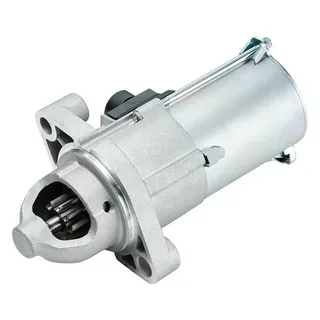Printed Circuit Boards (PCBs) are the foundation of modern electronic devices, providing the pathways for electrical signals that power everything from smartphones to satellites. For beginners, understanding the PCB manufacturing process may seem daunting. But fear not! This guide will break it down step by step, ensuring you have a clear picture of how these intricate boards come to life.
What is a PCB?
Before diving into the manufacturing process, let’s start with the basics. A PCB is a flat, insulating board made of materials like fiberglass or composite epoxy, onto which conductive pathways are etched. These pathways connect various components, such as resistors and capacitors, enabling them to work together in a circuit.
The PCB Manufacturing Process: Step-by-Step Guide
1. Designing the PCB
The journey begins with a well-thought-out design. Engineers use specialized software like Eagle, KiCad, or Altium Designer to create the layout of the PCB.
- Schematic Design: Engineers map out the connections between components.
- PCB Layout: The schematic is translated into a physical layout, deciding where each component and pathway will be placed.
2. Printing the Design on Film
Once the design is finalized, it is printed onto a transparent film. This film serves as a blueprint for creating the PCB. Separate layers are created for different parts of the board, including the conductive paths and holes.
3. Preparing the Substrate
The base of the PCB, often made of FR4 (a fiberglass material), is prepared. A thin layer of copper is laminated on both sides of the substrate to create a conductive surface.
4. Transferring the Design to the Board
This step involves transferring the design from the film onto the copper-coated board.
- Photoresist Application: A light-sensitive material called photoresist is applied to the copper surface.
- Exposure to UV Light: The board and the design film are aligned and exposed to UV light, hardening the areas where the design exists.
5. Etching the Board
After exposure, the board undergoes an etching process to remove unwanted copper, leaving only the designed pathways intact. The hardened photoresist protects the copper that needs to remain.
6. Drilling Holes
Drilling is done to create holes for mounting components or connecting different PCB layers. Modern manufacturing uses CNC (Computer Numerical Control) machines for high precision.
7. Plating and Layer Alignment
For multi-layered PCBs, the layers are aligned and bonded together. The holes are plated with a thin layer of copper to establish connections between layers.
8. Solder Mask Application
A solder mask is applied to the PCB to protect the copper pathways and prevent short circuits during soldering. The solder mask is the green (or sometimes red, blue, or black) layer you typically see on a PCB.
9. Silkscreen Printing
Labels, symbols, and component identifiers are printed on the board using silkscreen. This step makes it easier to identify components during assembly and troubleshooting.
10. Surface Finishing
Surface finishing involves applying a protective layer to exposed copper to prevent oxidation. Popular finishes include HASL (Hot Air Solder Leveling), ENIG (Electroless Nickel Immersion Gold), and OSP (Organic Solderability Preservatives).
11. Quality Inspection
Before the board moves to assembly, it undergoes rigorous quality checks:
- Automated Optical Inspection (AOI): Scans the board for defects.
- Electrical Testing: Ensures that the circuit paths are functioning correctly.
Assembling the PCB
After the PCB is manufactured, it’s time for assembly, where components are mounted onto the board.
Surface Mount Technology (SMT)
- Components are placed onto the board using automated machines.
- A reflow oven melts solder paste, securing the components.
Through-Hole Technology (THT)
- Components are inserted into drilled holes and soldered for a more robust connection.
Key Considerations in PCB Manufacturing
Material Selection
The choice of substrate and copper thickness impacts the PCB’s durability and performance.
Design Complexity
Multi-layered boards or dense layouts require advanced manufacturing techniques.
Quality Standards
Ensure the manufacturer complies with industry standards like ISO 9001 and IPC-A-610.
Why Understanding PCB Manufacturing Matters
Whether you’re an engineer, hobbyist, or entrepreneur, understanding the
PCB making process empowers you to make informed decisions about design, material selection, and supplier partnerships.
Conclusion
The PCB manufacturing process is a fascinating blend of precision engineering and innovative technology. By following each step, from design to assembly, you can appreciate the intricate work that goes into creating the electronic devices we rely on every day. Armed with this knowledge, you’re better equipped to navigate the world of electronics, whether for personal projects or professional endeavors.
FAQs
1. What is the first step in PCB manufacturing?
The first step is designing the PCB using specialized software to create a schematic and layout.
2. Why is a solder mask applied to the PCB?
A solder mask protects the copper pathways from oxidation and prevents short circuits during soldering.
3. What materials are commonly used for PCB substrates?
FR4 (fiberglass) is the most common material, but other options include aluminum and polyimide for specific applications.
4. How do manufacturers ensure PCB quality?
Manufacturers use quality control techniques like Automated Optical Inspection (AOI) and electrical testing.
5. Can beginners create their own PCBs at home?
Yes, beginners can create simple PCBs using DIY kits or basic etching methods, though professional manufacturing is recommended for
complex designs.
Like this:
Like Loading...
Related




